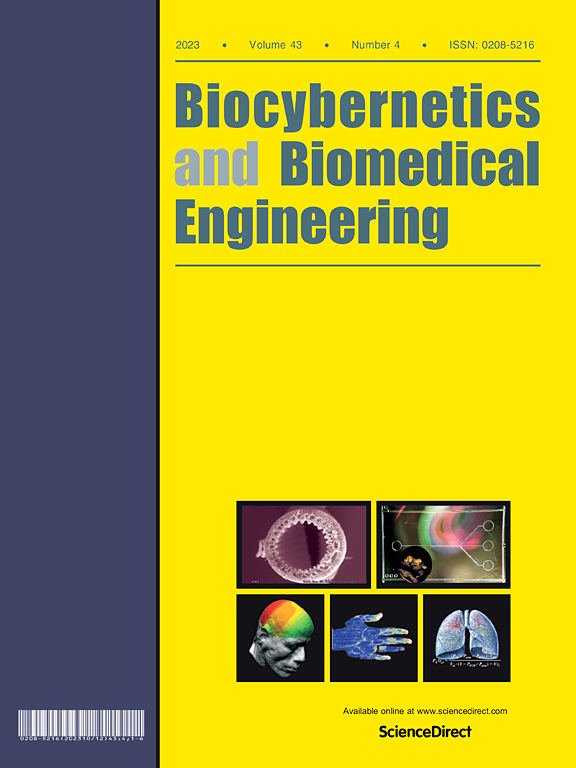Classifying developmental delays with EEG: A comparative study of machine learning and deep learning approaches
IF 6.6
2区 医学
Q1 ENGINEERING, BIOMEDICAL
引用次数: 0
Abstract
Early detection of developmental delays is crucial for improving children’s cognitive, social, and emotional outcomes through timely interventions. This study explores the potential of machine learning (ML) and deep learning (DL) to classify Electroencephalography (EEG) data from an oddball task, distinguishing between children with and without developmental delays. Participants underwent language assessments and EEG recordings, with subsequent analysis using Event-Related Potentials (ERPs), Event-Related Spectral Perturbations (ERSPs), and functional connectivity to characterize group differences. Three methodologies were employed in this research to classify EEG data. Firstly, statistical features are extracted from the EEG data and various ML algorithms are applied for classification, with feature selection techniques utilized to identify the most relevant features and enhance classification accuracy. Secondly, brain dynamics is utilized to incorporate ERP, ERSP, and functional connectivity measures as features for developmental delay detection. Similar to the first approach, feature selection techniques are again employed to enhance classification accuracy. Lastly, DL approaches are explored by implementing multiple convolutional neural networks (CNNs), including a 2D CNN (EEGNet), various hybrid CNN architectures integrating LSTM, GRU, and attention mechanisms, and a novel 1D CNN with a standardized convolutional layer (SCL) for improved stability and training performance. The effectiveness of each approach in accurately classifying EEG data for developmental delay detection is independently analyzed. The results demonstrate that the proposed 1D convolutional neural network outperforms both EEGNet and the employed ML classifiers. This model achieves an impressive accuracy of 96.4% and an F1 score of 96.6%, underscoring its potential as a valuable tool for early and accurate developmental delay detection using EEG data.
用脑电图分类发育迟缓:机器学习和深度学习方法的比较研究
早期发现发育迟缓对于通过及时干预改善儿童的认知、社交和情感结果至关重要。本研究探讨了机器学习(ML)和深度学习(DL)的潜力,以从一个奇怪的任务中分类脑电图(EEG)数据,区分有和没有发育迟缓的儿童。参与者进行了语言评估和脑电图记录,随后使用事件相关电位(ERPs)、事件相关谱扰动(ERSPs)和功能连接进行分析,以表征组间差异。本研究采用三种方法对脑电数据进行分类。首先,从脑电数据中提取统计特征,并应用各种ML算法进行分类,利用特征选择技术识别最相关的特征,提高分类精度。其次,利用脑动力学将ERP、ERSP和功能连接测量作为发育迟缓检测的特征。与第一种方法类似,再次使用特征选择技术来提高分类精度。最后,通过实现多个卷积神经网络(CNN)来探索深度学习方法,包括2D CNN (EEGNet),集成LSTM, GRU和注意力机制的各种混合CNN架构,以及具有标准化卷积层(SCL)的新型1D CNN,以提高稳定性和训练性能。独立分析了每种方法在准确分类脑电数据用于发育延迟检测方面的有效性。结果表明,所提出的一维卷积神经网络优于EEGNet和使用的ML分类器。该模型达到了令人印象深刻的96.4%的准确率和96.6%的F1分数,强调了它作为使用EEG数据进行早期和准确发育延迟检测的有价值的工具的潜力。
本文章由计算机程序翻译,如有差异,请以英文原文为准。
求助全文
约1分钟内获得全文
求助全文
来源期刊

Biocybernetics and Biomedical Engineering
ENGINEERING, BIOMEDICAL-
CiteScore
16.50
自引率
6.20%
发文量
77
审稿时长
38 days
期刊介绍:
Biocybernetics and Biomedical Engineering is a quarterly journal, founded in 1981, devoted to publishing the results of original, innovative and creative research investigations in the field of Biocybernetics and biomedical engineering, which bridges mathematical, physical, chemical and engineering methods and technology to analyse physiological processes in living organisms as well as to develop methods, devices and systems used in biology and medicine, mainly in medical diagnosis, monitoring systems and therapy. The Journal''s mission is to advance scientific discovery into new or improved standards of care, and promotion a wide-ranging exchange between science and its application to humans.
 求助内容:
求助内容: 应助结果提醒方式:
应助结果提醒方式:


